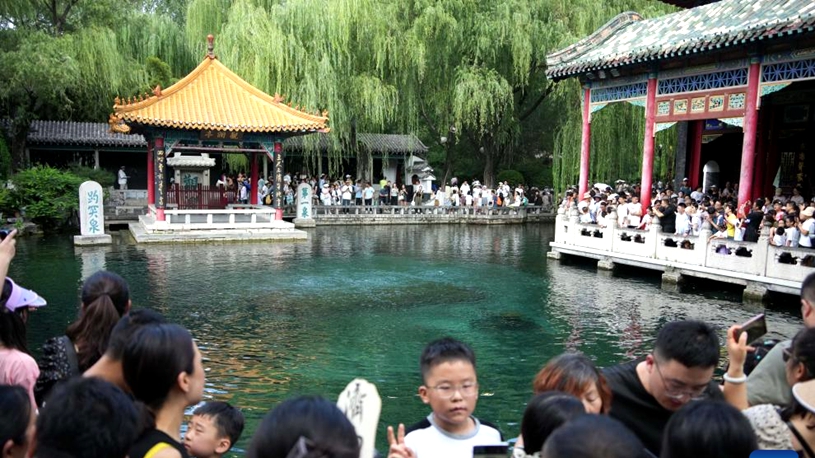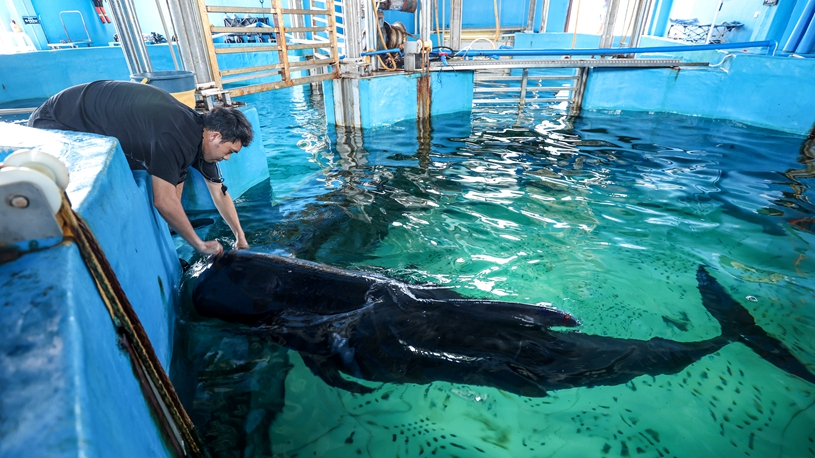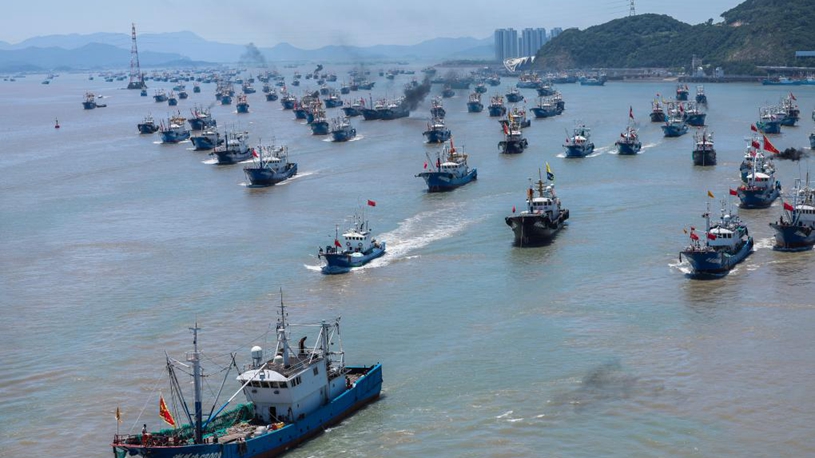Cambodian Prime Minister Hun Manet says the 180-km waterway will be a catalyst for economic growth and trade development when it is completed in 2028.
KANDAL, Cambodia, Aug. 6 (Xinhua) -- Cambodia on Monday began to build the 1.7-billion-U.S. dollar Funan Techo Canal, connecting the Mekong River's Preak Takeo tributary in southern Kandal province to the sea in southwestern Kep province.
Addressing more than 10,000 people at the groundbreaking ceremony for the canal, Cambodian Prime Minister Hun Manet said the 180-km waterway will be a catalyst for economic growth and trade development when it is completed in 2028.
"The Funan Techo Canal will link the capital Phnom Penh to the deepwater port in Preah Sihanouk province..., facilitating the country's trade exchange with the world," he said.
"It will help enhance Cambodia's economic autonomy through strengthening national independence and ownership in transporting cargoes by waterway," he added.
Hun Manet said the project will help attract investments in industries, agriculture, logistics and real estate, among others to areas on both sides of the canal.
Deputy Prime Minister Sun Chanthol, also first-vice president of the Council for the Development of Cambodia, said the canal project will start from the Mekong River's Preak Takeo tributary in Kandal province, running through Takeo and Kampot provinces before reaching the coast in Kep province.
He said the two-lane waterway will be 100 meters wide and 5.4 meters deep, capable of accommodating cargo vessels of up to 3,000 deadweight tons.
Chanthol said the construction will take four years to be completed in 2028 and a total population of 1.6 million living on both sides of this waterway will benefit from it.
"The canal will provide tremendous benefits to Cambodian society and economy, as it will reduce shipping costs, delivery time and distance," he said.
Chanthol assured that the canal will not have any adverse environmental impacts; instead, it will help maintain a stable environment, ecology and natural habitat for biodiversity.■












